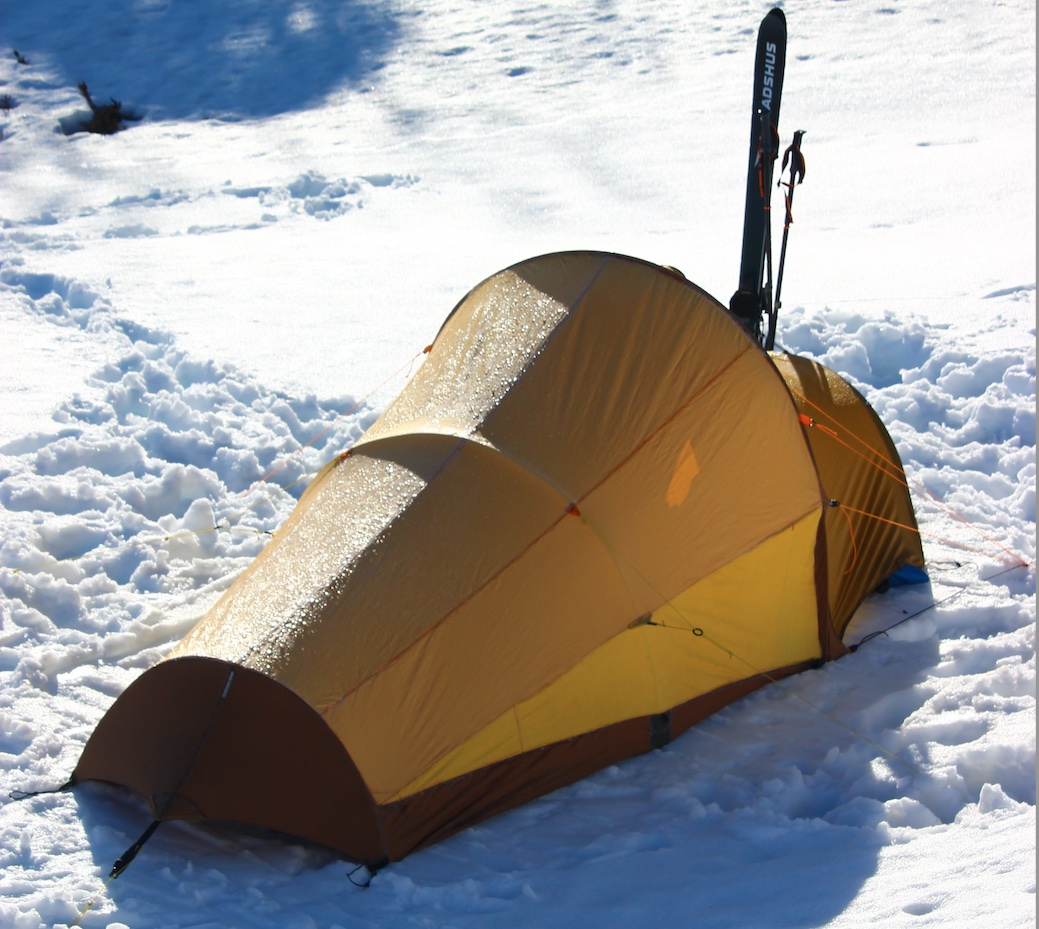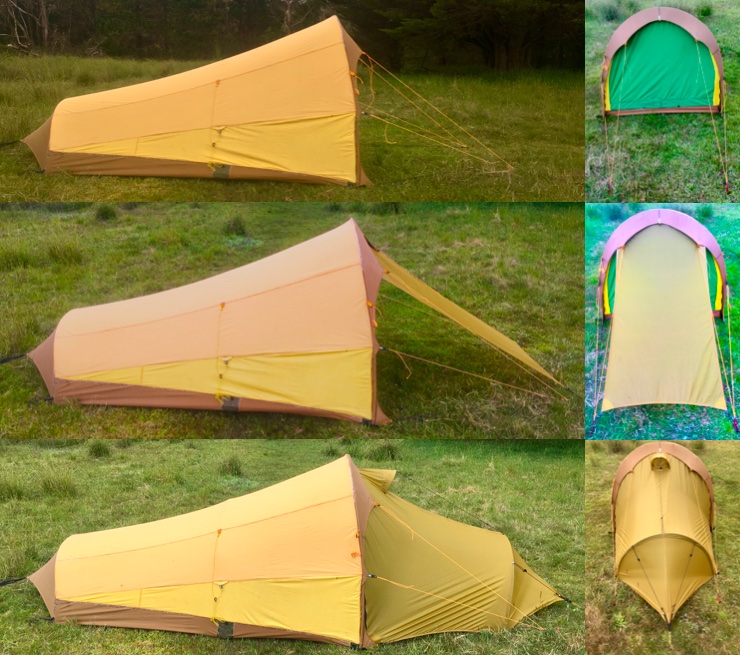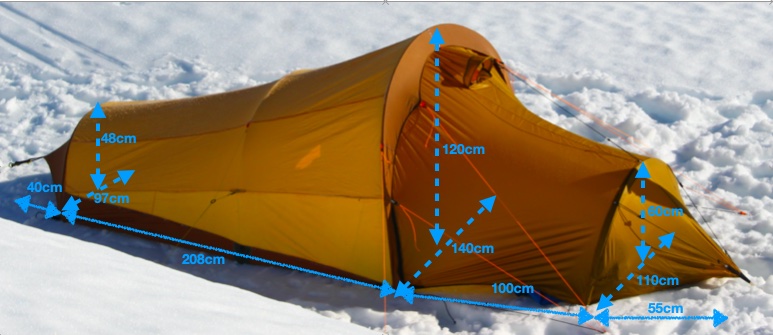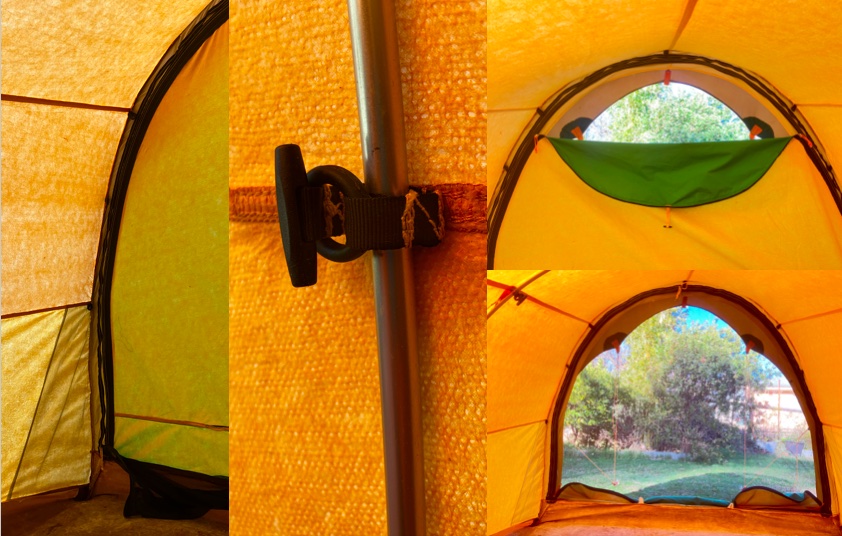Table of Contents
Table of Contents • Note: some sections may only be available to Premium or Unlimited Members.
Introduction
In 1981, I bought an Early Winters Omnipotent SL. It took forever to get to sleep on my first night under its canopy, staring up, marveling at the taut architecture and complex construction. This three-pole tunnel tent, with its two Gore-Tex doors and integrated inner and outer, pitched in the blink of an eye, with just two anchors (e.g., stakes) for mild conditions.
Years later, I’d end up working as an outdoor clothing and equipment designer, conjuring up apparel, sleeping bags, packs, first aid kits, etc. But I never brought a tent to market.
Later rebuilding and/or renovating classic tents became a bit of a masochistic hobby, but I still hadn’t scratched that itch of creating one from the ground up.

I moved on from designing commercial outdoor gear, because I didn’t think the world need any new stuff, and worked for decades in the environment and conservation sector.
Yet when friends or businesses were throwing away broken or unwanted tents and parts, I said, “Wait, I’ll take those.” Thinking one day, I might get around to making a tent.
Finally, I bit the bullet. I have ‘Frankenstein’, a tent from the materials I’d accumulated. A new tent, yet one from old reused and repurposed fabric and components.
I couldn’t afford to make full prototypes; I only had barely enough of some materials to use them a single time. Once cut, there was no going back. I couldn’t order more.

Features / Specifications
Features
This two-person shelter can quickly transition from a two-pole three-season bushwalking (backpacking) tent to a four-pole, fully vestibuled winter tent for backcountry ski trips.
The single-skin construction uses full Gore-Tex tent laminate for the canopy and ends. This three-layer cloth has a polyester Nexus inner lining which can hold excess condensation in its fluffy non-woven structure until the Gore-Tex membrane has the capacity to pass it through to the outside. (Even if the poles should collapse, the tent would effectively become a two-person Gore-Tex bivvy bag.) A rear tension cone of coated nylon protects the low vent, so cool dry air is drawn in, to then rise out the much higher front vent where it escapes pulling moisture-laden hot air with it. A simple guyline on this top vent keeps it upright in windy weather.
Only three anchors are required in most conditions – one for the rear tension cone and two for the front tension flap. If wind or snow load is expected, there are plenty of other guy lines and anchor points available.
The completely zip-detachable winter vestibule has arched pole support to cope with snow load. It easily accommodates two rucksacks and two pairs of ski boots with oodles of space for protected and ventilated cooking, with simple egress/access via left or right sides. It only requires one peg to pitch, includes a small floor in the front tension cone, and a high zip-adjustable, hooded vent.
A clip-on summer vestibule, weighing a quarter of the winter option, can alternatively be employed, providing shelter for a vented front door, a weather-protected cooking space, and somewhere outside the tent to store muddy, wet boots. It uses no additional pegs, simply slipping over the existing front tension flap anchors.
Vestibules can be left attached to the tent if required. The summer version rolls up into the front eave, out of the way, until needed. The winter vestibule can be completely unzipped from either side. Its sides can be zipped opened and clipped to the centre vent guyline, but then quickly sealed if weather threatens.
The tent can also be easily used without either vestibule. A toggle on the front Gore-Tex door allows for the top of it to be partially opened for ventilation in all but horizontal head-on rain.

There are two internal mesh pockets for the storage of small items. Webbing loops are positioned to act as internal guylines if conditions warrant it. Metal zipper pulls have been replaced with reflective cord. Peg-out points are doubled loops of reflective cord so they accommodate either a ground peg or a ski as the anchor, without needing to add extra cord. The internal foot and head ends are both vertical, unlike other tunnel designs, specifically Scandinavian-inspired models, which often slope. This provides more livable space, and with both being Gore-Tex, there is less concern about the ends of one’s sleeping bag getting wet.
Although certainly not in the category of an ultralight shelter, the tent does offer huge versatility. It spans from a very spacious one-person, well-ventilated 3 season tent to a secure, windproof, and snow-stable Alpine haven for two people and all their gear.
And it does so in an environmentally responsible manner, with over 85% of the materials having been salvaged and reused from preloved tents and bivvies. Some of them are well over 35 years old. (Only the vestibules and front insect screen door employ virgin fabric.) The centre top ridge seam is the only seam I didn’t subject to my sewing machine.
The tent has been successfully field tested this year, although some refinements are under consideration.
Specifications
Weights (total tent weights do not include stuff sacks or tent pegs, but do include guy lines):
- Main tent body – 1,668 g (58.8 ounces)
- Front pole – 200 g (7 ounces)
- Rear pole – 75 g (2.6 ounces)
- Centre pole – 108 g (3.08 ounces)
- Winter Vestibule – 357 g (12.6 ounces)
- Winter Vestibule pole – 105 g (3.7 ounces)
- Summer Vestibule – 108 g (3.8 ounces)
- Summer tent, with two poles & no vestibule – ~1.9 kg (4.2 pounds)
- Winter tent with four poles & hooped vestibule – ~2.5 kg (5.5 pounds)
Pegs (stakes):
- Minimum pegs required (Summer) – 3
- Minimum pegs required (Winter) – 4
- Additional storm guylines – 4
- Additional base peg points – 8
- Maximum possible peg-out points – 16
Packed size:
- Tent without poles, pegs, or vestibules – 7 litres (427 cubic inches) / 33 cm high x 16 cm diameter (13 inches x 6.3 inches)

Dimensions:
- Length – 208 cm (82 inches)
- Front width – 140 cm (55 inches)
- Rear width – 97 cm (38 inches)
- Front height – 120 cm (47 inches)
- Rear height – 48 cm (19 inches)
- Winter vestibule length – 155 cm (61 inches)
- Winter vestibule height at pole – 60 cm (24 inches)
- Winter vestibule width at pole – 110 cm (43 inches)
- Summer vestibule length – 120 cm (47 inches)
- Tent body floor area – 2.46 sq. m. – (26.48 sq. ft.)
- Winter vestibule floor area – 1.55 sq. m. (16.68 sq. ft.)
- Summer vestibule floor area – 1.1 sq. m. (11.8 sq. ft.)
- Length – rear peg to front winter peg – 465 cm (183 inches)
- Collapsed pole folded length (longest) – 55 cm (22 inches)
- Span between tent poles – 94 & 119cm (37 & 47 inches)
Materials
Fabrics:
- Floor – Nylon Taffeta 160 x 90 TC 170 psi 7.5 lb warp x 7 lb weft (Chocolate Brown)
- Rear cone – Nylon Taffeta 160 x 90 TC 170 psi 7.5 lb warp x 7 lb weft (Chocolate Brown)
- Front tension panel – Nylon Taffeta 160 x 90 TC 170 psi 7.5l b warp x 7 lb weft (Chocolate Brown)
- Canopy Ceiling – Polyester tent Gore-Tex (polyester Nexus inner) 91 x 96 TC 15,590 gms/m2/24hrs (Desert Tan)
- Canopy Lower walls – Nylon tent Gore-Tex (polyester Nexus inner) 86 x 110 TC 3.2oz/sqyd (Yellow)
- Front door – Nylon tent Gore-Tex (polyester Nexus inner) 86 x 110 TC 3.2oz/sqyd (Meadow Green)
- Rear vent cover – Nylon tent Gore-Tex (polyester Nexus inner) 86 x 110 TC 3.2oz/sqyd (Yellow)
- Front door mesh – No-see-um style Mosquito Net, Polyester, 45g/sqm, 155 meshes/cm2 (Black)
- Rear vent mesh – Micro-knit netting (Lime Green)
- Winter vestibule – Sil/Sil polyester 30d 45 g/sqm 2,000 mm, tear 5 kg/4 kg tensile 37.5 kg/35.5 kg (Sand)
Notions:
- Front Gore-Tex door zipper – YKK No. 5 coil with double pull slider
- Front mesh door zipper – YKK No. 3 coil with double pull slider
- Rear vent cover (Gore-Tex) zipper – YKK No. 3 coil
- Winter vestibule & tent joining zipper – YKK 5C zipper, coil, separating, two-way with double pull slider
- Winter vestibule vent stiffener – 3 mm (0.12 inches) Delrin rod
- Winter vestibule vent zipper – YKK No.3 coil with double pull slider
- Front Tension guyline rings – 15 mm (0.59 inches) stainless steel welded ring rated to 7 kN
- Centre pole & summer vestibule clips – 12 mm (0.47 inches) nylon tent ring, & slotted nylon T-Bar (for 10mm [0.39 inches] webbing)
- Winter vestibule pole sleeve – Taffeta 160 x 90 Thread count 170 psi 7.5 pound warp x 7 pound weft plus 210d packcloth
- Winter vestibule reinforcements – X-Pac Kevlar clear
- Front tension panel guy adjusters – 15 mm (0.59 inches) Line Lock Lite & 15 mm (0.59 inches) Line Lock Lite side release buckle
Guylines:
- Front guy lines – Lawson 2.3 mm (0.09 inches) Reflective Glowire, Orange
- Side and rear guy lines – Lawson 2 mm (0.08 inches) Reflective Glowire, Gold
- Rear shock-cord – 8 mm (0.32 inches) marine-grade, multi-strand elastic core with polyester fine plait cover
Poles:
- Rear and centre pole – 8.5 mm (0.33 inches) Easton aluminium
- Front pole – 9.6 mm (0.38 inches) Yunan aluminium, with floating connectors.
- Winter vestibule pole – 8.88 mm (0.38 inches) Yunan aluminium, with floating connectors

The provenance of re-used materials
- Marmot Twilight 2P bivvy tent – taffeta floor, tension flap & vestibule pole sleeve, canopy Gore-Tex, vent zips, & tension flap grosgrain
- Mountain Designs Burrow bivvy tent – canopy side walls Gore-Tex
- Early Winters Sleep Inn bivvy bag – front door Gore-Tex
- Sierra Design Divine Light bivvy tent – Front door zip facings (SD Hocus Pocus—a 2 layer waterproof breathable fabric)
- The North Face June Bug – Easton poles (rear and centre pole)
- Wilderness Equipment Second Arrow – main front Yunan pole and winter vestibule’s Yunan pole, and guy lines
- Wilderness Equipment i-Explore – winter vestibule grosgrain and t-bars (& prototyping fabric)
- Black Diamond Equipment Mesa – webbing, reflective pullouts, pole velcro, reflective cord
- One Planet Wurley – delrin rod for winter vestibule vent
I also drew upon a personal collection of materials I’ve hoarded over many years: cords, webbing, fabric swatches, plastic hardware, and the like. The Lawson Glowire guyline cord was left over from previous tent renovations I’d undertaken. In a reuse shop, I found an Aldi inflatable, something or other, that had long lengths of seam-free polyester fabric. I used it to fashion a prototype winter vestibule instead of cutting up my Silpoly. The original Marmot Twilight bivy tent stuff sack I trimmed down to become the new pole bag.
New materials
The ripstop silicone polyester, no-see-um netting, two-way separating zip, nylon and steel rings, etc., were sourced from Extremtextil, out of Berlin, Germany. Other zips, mini line locs, etc., were found at Tier Gear from Tasmania, Australia. I was pleased with the service from both suppliers.
Member Exclusive
A Premium or Unlimited Membership* is required to view the rest of this article.
* A Basic Membership is required to view Member Q&A events




Home › Forums › MYOG Tunnel Tent (The Frankenstein Tent: Old Materials Come Alive Again)